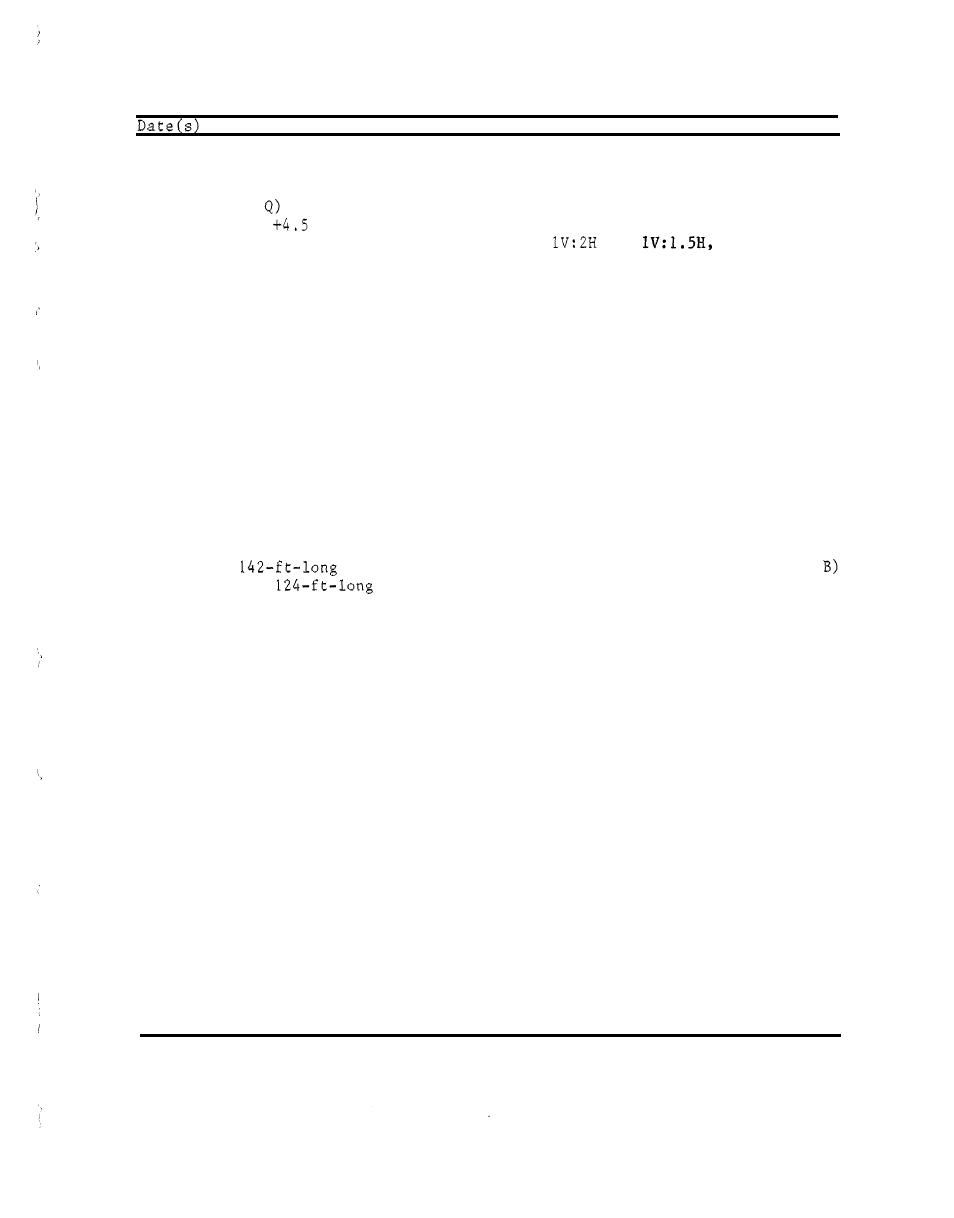
Table 46 (Concluded)
Construction and Rehabilitation History
Steel sheetpiling was driven on each side of the breakwater heads
(Section Al) forming a structure 40.3 ft in width. The voids were
stone filled and capped with concrete. The pier connections (Sec-
were capped with an 8-ft-wide precast concrete slab at an
tion
el of
ft lwd. Stone was added to the channel side and the lake-
side of the structure with slopes of
and
respectively.
Steel sheetpiling also was added along the sides of the south pier
(Figures I and J ) . The voids were filled with stone, and a concrete
cap was added.
An inspection of the structures indicated that the breakwaters and
1979
north pier were in good condition, while the south pier revealed
cracks, settlement, and erosion of concrete and was considered in
fair condition. It was noted that replenishment of riprap stone was
required in some areas along the breakwater.
Riprap stone was placed around the lakeward end of the north break-
1980
water (Section Al) on the lakeside. The north and south pier con-
nections underwent replenishment of stone in areas that had settled.
The lakeward 55 ft of the south pier (Section I) and a 55-ft-long
portion of Section J were rehabilitated. Precast concrete caps were
installed.
1983-
A
and a
portion of the south breakwater (Section A) were
1984
encased with steel sheetpiling, filled with stone, and capped with
concrete. The remaining portions of Section B (north breakwater) and
Section A (south breakwater) were encased with protection stone.
Approximately 80,000 tons of stone was used, and the cost was
approximately ,000,000.
I
An inspection of the structures revealed them to be generally in good
1985
condition. Fill stone replenishment was recommended, however, at the
lakeward heads of the breakwaters (Figure 123, Section Al). An
aerial view of Holland Harbor Structures is shown in Figure 125.
201
I




 Previous Page
Previous Page
